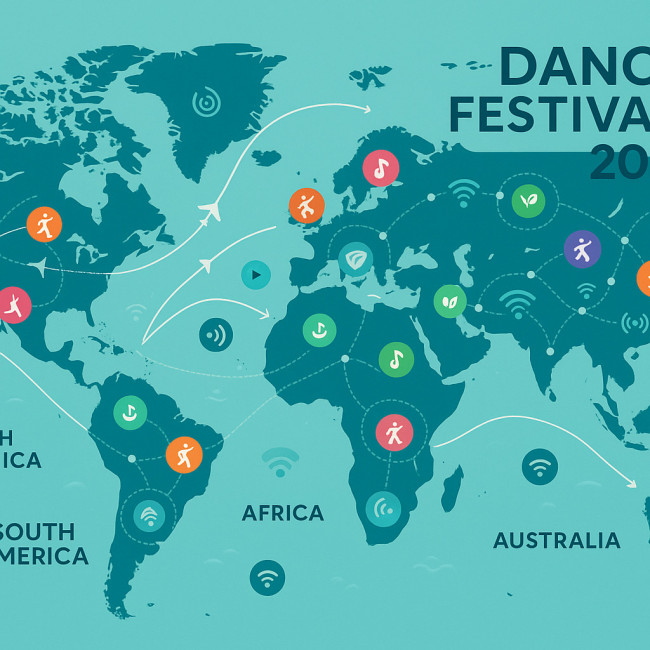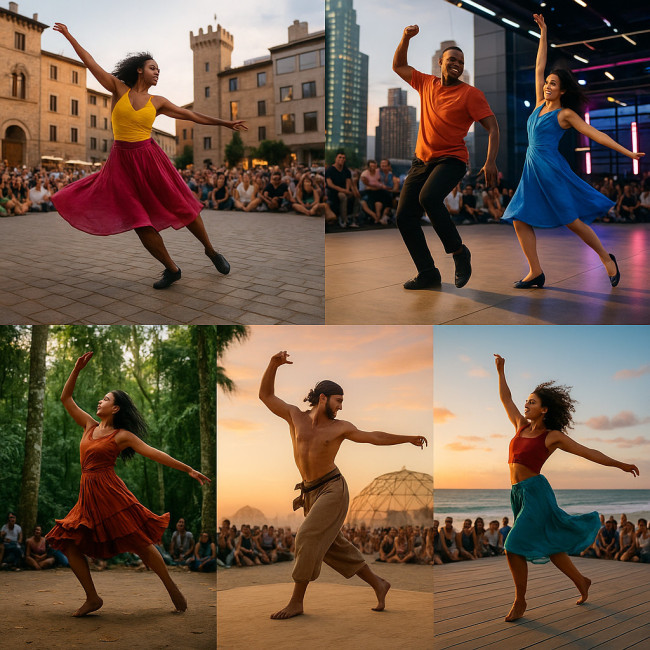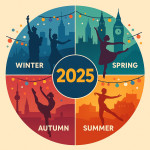Mapping 2025 dance festivals worldwide: get booked and scout talent faster
Have you ever lost a gig because you found the festival too late? Build a living map of 2025 dance festivals and you will pitch first, travel smarter and discover fresh talent ahead of the curve. Follow the guide.
Why 2025 is a pivotal year for dance festivals
Post-pandemic bounce-back, generous cultural grants and brands wanting live storytelling have created the densest global festival calendar in a decade. Programmers have doubled their open-call quotas, and touring companies compete for fewer prime slots. A proactive map helps you:
- Submit proposals before curators' inboxes overflow.
- Route tours to minimise flights and carbon costs.
- Track where recruiters browse event-focused dancer profiles and harvest casting shortlists.
Build your 2025 festival map in 5 practical steps

Visualising your target events on a single canvas does more than look pretty; it unlocks strategic opportunities at a glance. When you see how an eco-themed site-specific festival in Denmark aligns with a hybrid live-stream event in Toronto a month later, you instantly recognise a feasible routing corridor. Add visa lead times, climate considerations and available residency grants to the same layer and you get an interactive control panel that saves hours each week. Keep it open while you negotiate fees and you will never double-book a border crossing again.
1. Gather reliable calendars
Start with national arts councils, UNESCO Creative City listings and the Touring Artists portal. Add niche sources such as urban dance battles or indigenous dance gatherings. Export dates to a spreadsheet.
2. Enrich with funding deadlines
Many festivals require application six to nine months out. Insert grant cut-off dates directly next to the festival row, so you never scramble for support letters.
3. Score festivals by booking potential
Create three columns: audience size, technical specs and fee ranges. Rank each 1-5. The sum becomes a quick “go/no-go” indicator.
4. Add travel logistics
Overlay visa wait times, climate notes and local rehearsal studio costs. A great fee can evaporate if freight exceeds budget.
5. Update monthly
Use colour coding. Green = all set, Amber = awaiting reply, Red = dropped. A dynamic map beats static PDFs when programmers shift priorities.
Regional hotspots and key booking windows

Each region follows its own seasonal rhythm, fee logic and thematic obsession, and understanding those subtle differences is what separates well-paid tours from stress-soaked marathons. Imagine arriving in Seoul during tech-art week with a piece built for unplugged acoustics—wrong fit, wrong audience. By analysing booking windows, fee averages and emerging trends ahead of time, you slot the right show into the right context. That means smaller marketing spend, fuller houses and far friendlier critics, because you meet the audience where their curiosity is already headed.
| Region | Peak submission month | Average fee (USD) | Lead time (weeks) | Notable 2025 trend |
|---|---|---|---|---|
| Europe | October 2024 | 4 500 | 30 | Eco-themed site-specific pieces |
| North America | January 2025 | 3 800 | 24 | Hybrid stage + live-stream formats |
| Asia | April 2025 | 3 200 | 20 | Cross-disciplinary tech collabs |
| South America | August 2024 | 2 600 | 28 | Community outreach requirements |
| Africa | July 2024 | 2 100 | 32 | Corporate wellness stages rising |
| Oceania | September 2024 | 3 000 | 26 | Sustainability rider incentives |
Pitch smarter: templates that win curators' attention
Curators skim proposals in three minutes. Your cover email must show clear artistic vision and logistical readiness. Borrow proven tactics from the 2025 showcase calendar blueprint:
- Subject line: “Contemporary Afro-Jazz • 3 dancers • 30 mins • carbon-light tour package”.
- First paragraph: hook with story and audience impact.
- Second: technical sheet link and tour routing suggestions.
- Third: awards, press quotes and video reel (30–60 s).
Reluctant to repeat details? Auto-populate your mail merge fields from the same sheet where you store your festival map.
Scout talent faster with data-driven tools
Festival directors want ensembles that mesh quickly. They increasingly preview dancers through analytics-rich directories. Speed up your own shortlisting by combining smart filters with ongoing reel reviews:
- Use reel-assessment checklists to spot technique and stage presence in under two minutes.
- Activate rapid profile scans to compare availability calendars side by side.
- When travel is impossible, deploy the tactics from live-stream dance events and still secure casting approvals.
FAQ
- How many festivals should I target for a viable 2025 tour?
- Most midsize companies book 5–7 festivals per quarter to cover travel costs and maintain momentum.
- Is it worth paying festival submission fees?
- Yes, if the festival offers significant industry exposure or covers accommodation. Track ROI in your map.
- How early do I need to secure visas for non-Schengen tours?
- Plan for 12–16 weeks. Add reminders in your mapping sheet to avoid last-minute delays.
- What file format converts best for festival applications?
- PDF under 10 MB with embedded links outperforms large ZIP packets. Curators open it on mobile.
Test your festival-readiness!
Conclusion: turn your map into confirmed gigs
You now have a framework to visualise every 2025 dance festival, optimise routes, and impress curators early. Update the sheet monthly, refine pitches weekly and monitor directory stats daily. The sooner you act, the sooner contracts land in your inbox.
Ready to lock your first dates? Start mapping today and share your spreadsheet with your agent before the week ends.











